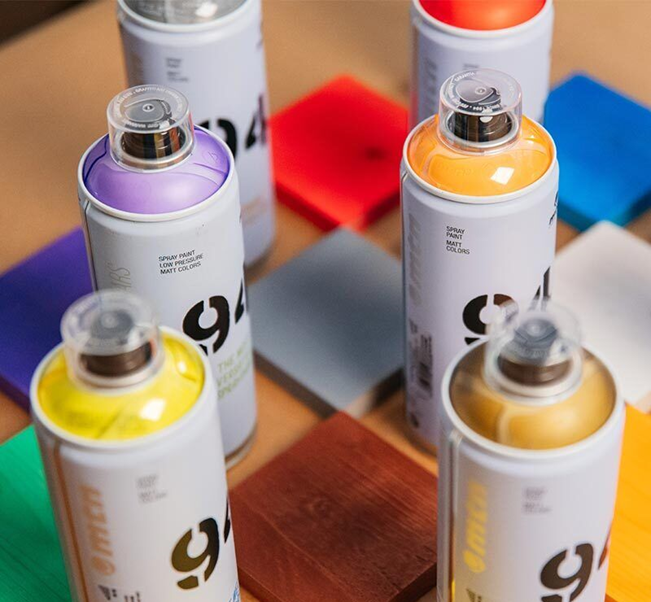When you’re trying to get a painting project done meticulously and in a short matter of time, there’s no doubt you’d consider of spray painting as the go-to method, faster and more efficient than traditional brush painting. Regardless of what your project may be, whether it’s taking care of a stunning mural artwork, or finishing up a car’s paint, or maybe doing some DIY furnishing jazzing up, there’s the right spray paint colour and product finish for you.
But, this isn’t the only aspect you need to consider when shopping for spray paint cans for your work. Besides paying attention to the colour, hue, and finish you’re aiming for, it’s also necessary to go into other essential details, like the size of the can and the amount of paint there is in it.
How Do I Know How Much Spray Paint I Need?

These two aspects, the size and amount of paint specifically, are crucial to give you an idea on how much paint you’d require, and consequently, how many cans you ought to buy to get the project done. With reliable brands, like Montana Colors, you don’t only have the amount of paint indicated, but the theoretical yield in metre square too, i.e. the approximate coverage.
Typically, the 250ml option can cover about 1.5m², the 400 to 500ml about 3m², 1l about 6m², and 2l about 12m². Then again, this is a rough estimate because the actual amount of spray paint cans can depend on the paint coverage you need to do based on your spray technique, number of coats, temperature, and thickness.
On average, to be able to count on a job well done, you’d need at least two light coats, so you’d use about one canister on one square metre. Then again, the texture of the area you need to paint can have a say in your purchase too, as the more textured the area, the more the surface you’d have to cover – about two to three times more as opposed to a smooth surface.
How to Paint Properly with a Can?
Getting the painting technique right is essential in nailing the project and getting a result you’re proud of. So, besides buying the suitable spray cans in the needed amount, it’s also necessary to pay attention to how you use them.
Check the Instructions
First and foremost, be sure to read up the instructions provided on the cans by the manufacturer to get to know the time required to completely dry. This is also indicated as crucial info about the cans when shopping online. Knowing the drying time and the type of paint you get can be of help with determining how long a project would take.
It can provide you with insight on how much time you’ve got to work on a mistake too. In the case with acrylic-based paints, for example, that are water-soluble, they can be fixed until completely dry when they become water-resistant with great durability. Furthermore, the instruction info is useful for letting you know if you need a primer before your paint project for a great outcome.
Master the Spraying
Before you start working on the actual project, it’s advisable to do a bit of practice first to get the gist of the spraying. Instead of applying too much pressure and relying on continuous bursts of paint, you get more control by doing short bursts with low pressure of the spray. It’s also helpful to buy a low-pressure spray can for more flow control.
This is useful for small as much as for large areas, especially considering the smoother flow doesn’t end up in clogging the nozzle. Additionally, you should consider acquiring accessories such as different caps suitable for your can in a range of designs to experiment painting with different results, or having more precision for a specific project.
There are female, male, thin, fat, super fat, outline, needle, stencil, and calligraphy caps you can have fun trying out. One more step of the spray painting technique you ought to have in mind, no matter the colour, paint type, or cap you’re using, is to always hold the cans upright while spraying.
In addition to ensuring you get the proper smooth flow, you also reduce the risk of nozzle clogging. Before every use, it’s good to shake the can well to prevent clogs too, as well as to avoid the settling of the paint. If the nozzle does get clogged eventually, and you can’t clean it with a warm water soak, then it’s best to simply swap it out for a new one.
Ensure Proper Storage
Getting the suitable spray paint can and knowing how to use it optimally is only part of the deal of having a successful result – you also need to do your part in storing the cans well. First and foremost, it’s essential to get in the habit of cleaning the nozzles before and after every paint project to reduce the chances for clogging up.
Next, what could be of help in this aspect as well is to tighten the cap securely prior to storing the cans to prevent moisture from making its way in. Lastly, remember to choose the perfect spot for the storage – it has to be a dry area with temperature that isn’t extreme, neither too hot nor too cold.
























